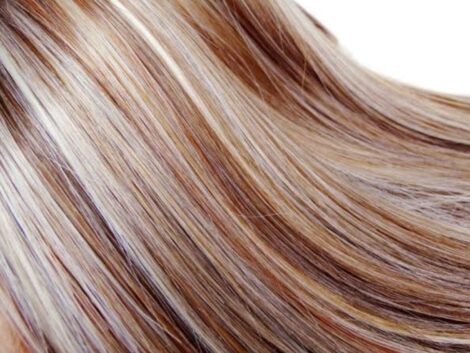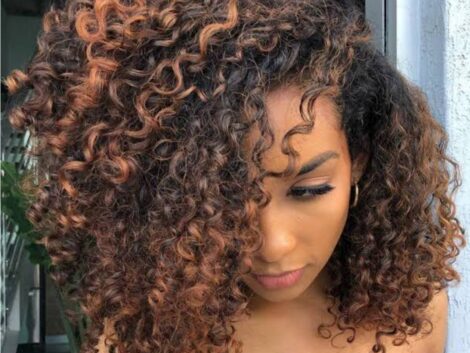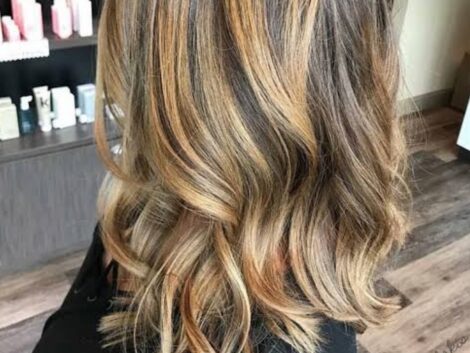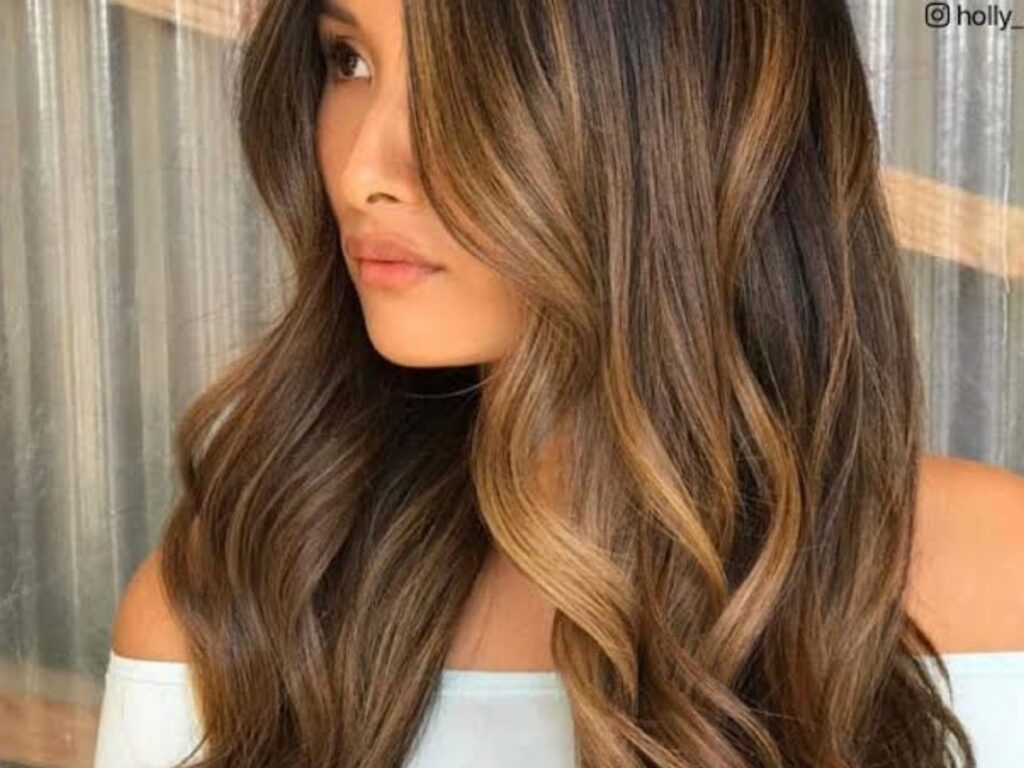Actually, balayage is a partial head of highlights. Balayage and traditional highlights are two different hair coloring techniques.
Balayage
Balayage is a French word that translates to “sweeping” or “painting.” It is a freehand technique used to create natural-looking, sun-kissed highlights. Instead of using foils or traditional highlighting methods that apply color from roots to ends, balayage involves hand-painting the color onto specific sections of the hair. The result is a more gradual and blended transition between the colored and natural hair, giving it a soft, low-maintenance, and lived-in look. Balayage is typically applied to the surface of the hair, focusing on the mid-lengths and ends, but it can also be done closer to the roots for a more rooted or grown-out effect.
Full Head of Highlights
Traditional highlights involve applying color throughout the entire head using foils or other partitioning methods. The goal is to uniformly lighten the hair from the roots to the ends, resulting in a more uniform and evenly distributed color. Full-head highlights are suitable for achieving a consistent lightening effect throughout the hair and are often used when someone wants to go significantly lighter or create a more defined contrast between the base color and the highlights.
In summary, balayage is a technique that creates a more natural and blended look by hand-painting highlights on specific sections of the hair, while a full head of highlights involves applying color throughout the entire head using foils or other methods to achieve a more uniform lightening effect.
Is balayage the same as a full head of highlights?
No, these two look different and are also done with totally different techniques. Where a full head of highlights is done by coloring all the hair from root to tip using foils, the balayage is done by sweeping color with a brush from the middle of the hair until the end.
So, a full head of highlighter starts from the root, but balayage typically starts from the middle of the hair. Then the full head of the highlighter looks more artificial and requires less expertise. On the other hand, balayage looks more natural, and a stylist has to be experienced enough to do highlights using this method.
Both of these are highlights, but they are not similar at all.

What is considered a full head of highlights?
A full head of highlights refers to a hair coloring technique where highlights are applied throughout the entire head of hair. The colorist will typically divide the hair into sections and then apply the lightener or hair color to each section to achieve an all-over, uniform lightening effect. This method is used to create a more dramatic contrast between the base hair color and the highlighted strands, resulting in a brighter and more noticeable overall look.
The number of highlights and the spacing between them can vary based on the desired outcome and the hair’s thickness and texture. A full head of highlights can range from subtle, natural-looking highlights to a bold, more striking look, depending on the color and placement of the highlights.
It’s essential to communicate your preferences and desired results with your hair colorist to ensure they understand the look you want to achieve. They can then customize the color application to suit your individual hair type and style preferences.

Is a balayage a full head of foils?
No, a balayage is not a full head of foils. There are two distinct hair coloring techniques that produce different results.
As previously mentioned, balayage is a freehand highlighting technique where the colorist paints or sweeps the hair with a lightener or hair color to create soft, natural-looking highlights. Balayage focuses on the surface and ends of the hair, giving it a sun-kissed, lived-in appearance. It doesn’t involve foils and is typically less uniform, resulting in a more blended and natural look.
On the other hand, a full head of foils is a highlighting technique where the colorist uses foils to apply the lightener or hair color to sections of the entire head of hair. Foils are used to isolate the highlighted strands and prevent them from blending with the surrounding hair, resulting in a more defined and uniform highlighting effect. A full head of foils is typically used when a client wants a more noticeable and overall lighter look throughout their hair.
In summary, while both balayage and a full head of foils are used for highlighting the hair, they differ in the application method and the final outcome. Balayage creates a softer, more natural look with a less uniform pattern, while a full head of foils provides a more defined and consistent highlighting effect. The choice between the two techniques depends on the desired result and the client’s personal preferences.

Is balayage a half-head of foils?
Balayage is not the same as a half-head of foils, but they are similar in some aspects. Let’s explore the differences between the two hair coloring techniques:
Balayage
As previously explained, balayage is a freehand highlighting technique where the colorist paints or sweeps the hair with a lightener or hair color to create soft, natural-looking highlights. The highlights are typically focused on the surface and ends of the hair, and the application is done in a way that creates a sun-kissed, blended effect. Balayage does not use foils; instead, the colorist applies the color by hand, allowing for a more organic and seamless transition between the colored and natural hair.
Half head of foils
A half head of foils is a highlighting technique where the colorist applies foils to the top half of the upper section of the head. This technique is often chosen when a client wants more pronounced highlights, primarily on the top layer of their hair. The foils are used to isolate the highlighted strands, creating a more defined and concentrated highlighting effect. The bottom half of the hair is left uncolored or may have some lowlights for contrast.
While both balayage and a half-head of foils are used to add dimension and lightness to the hair, the key difference lies in the application method and the area of focus. Balayage involves painting the hair by hand and typically covers more surface area, while a half head of foils uses foils to isolate and highlight a specific portion of the hair, usually the upper half.
It’s essential to consult with a professional colorist to determine which technique would be best suited to achieve your desired look based on your hair type, current color, and style preferences. They can help you decide whether you prefer a more natural, blended effect with balayage or a more defined, concentrated look with a half-head of foils.

Why is balayage more expensive than highlights?
Balayage is often more expensive than traditional highlights for several reasons:
Time and Skill
Balayage requires a higher level of skill and expertise from the colorist. It is a freehand technique that involves painting the color onto the hair, which requires precision and artistry to achieve the desired natural and blended look. The process can be more time-consuming compared to traditional highlights, where foils may be used to apply color in a more structured manner.
Customization
is highly customizable to each individual’s hair color, texture, and face shape. The colorist needs to assess the client’s hair and create a personalized approach, tailoring the highlights to enhance their features. This personalized attention and tailored approach contribute to the higher cost.
Less Frequent Maintenance
Balayage often has a softer and more gradual grow-out, meaning that clients can go longer between touch-up appointments. This can result in fewer visits to the salon over time, but the initial application may be more costly due to the time and skill required.
Quality of Products
Salons that offer balayage services may use higher-quality products, which can contribute to the higher cost. Premium lighteners and hair color products may be used to achieve the best results while maintaining the health and integrity of the hair.
Demand and Popularity
It has gained significant popularity in recent years, and as with any in-demand service, the cost may be higher due to supply and demand dynamics.
It’s important to note that the cost of balayage or highlights can vary widely depending on factors such as the salon’s location, reputation, and the experience of the colorist. It’s always best to consult with a professional colorist and discuss your desired outcome and budget to understand the pricing for your specific situation. Investing in a skilled and experienced colorist can often lead to better results and a more satisfying overall experience.
Read more.
Lastly, check out the mane caper shop.

